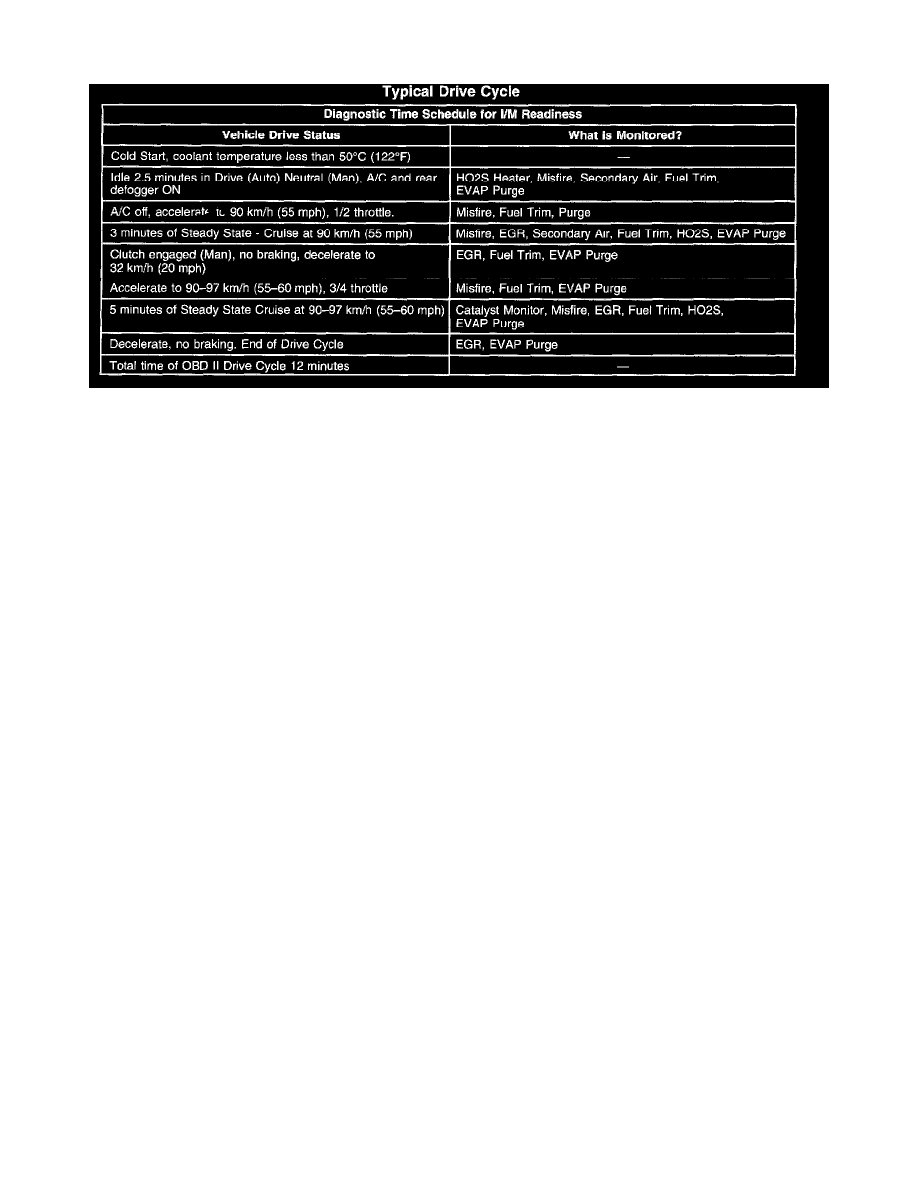Astro Van 2WD V6-4.3L VIN W (2001)

Following a DTC info clear, System Status clears for one or all of these systems. Following a battery disconnect or a PCM replacement, all System
Status information clears.
Typical Drive Cycle
Primary System Based Diagnostics
There are primary system-based diagnostics which evaluate the system operation and their effect on vehicle emissions. The primary system-based
diagnostics are listed below, with a brief description of the diagnostic functionality.
Oxygen Sensor Diagnosis
Diagnose the fuel control heated oxygen sensors for the following conditions:
^
Heater performance, time to activity on cold start Slow response
^
Response time, time to switch R/L or L/R
^
Inactive signal, output steady at bias voltage - approximately 450 mV
^
Signal fixed high
^
Signal fixed low
Diagnose the catalyst monitor heated oxygen sensors for the following functions:
^
Heater performance, time to activity on cold start
^
Signal fixed low during steady state conditions
^
Inactive sensor
Heated Oxygen Sensors
The main function of the pre-catalyst Heated Oxygen Sensor (HO2S) is to provide the (PCM) with exhaust stream information in order to maintain
proper fueling to hold emissions within acceptable levels. These oxygen sensors are always located between the exhaust manifold and the catalytic
converter. After the sensor reaches the operating temperature, the sensor generates a voltage inversely proportional to the amount of oxygen present in
the exhaust gases.
The PCM uses the signal voltage from the fuel control heated oxygen sensors in a Closed Loop in order to adjust the fuel injector pulse width. While in a
Closed Loop, the PCM can adjust fuel delivery in order to maintain an air to fuel ratio which allows the best combination of emission control and
driveability.
If the oxygen sensor pigtail wiring, connector, or terminal are damaged, replace the entire oxygen sensor assembly. Do not attempt to repair the wiring,
the connector, or the terminals. In order for the sensor to function properly, the sensor must have a clean air reference provided to it. This clean air
reference is obtained by way of the oxygen sensor wires. Any attempt to repair the wires, connectors, or terminals could result in the obstruction of the
air reference. Any attempt to repair the wires, connectors, or terminals could degrade oxygen sensor performance.
Catalyst Monitor Heated Oxygen Sensors
In order to control emissions of Hydrocarbons (HC), Carbon Monoxide (CO), and oxides of Nitrogen (NOx), the system uses a 3-way catalytic
converter. The catalyst promotes a chemical reaction which oxidizes the HC and CO present in the exhaust gas, converting the HC and CO into harmless
water vapor and carbon dioxide. The catalyst also converts
NOx to nitrogen. Catalyst monitor HO2S, post-catalyst HO2S, are always located downstream of the catalytic converter.
The PCM has the ability to monitor this process using the post catalyst heated oxygen sensors. The pre-sensors produce an output signal which indicates
the amount of oxygen present in the exhaust gas entering the 3-way catalytic converter. The post sensor produces an output signal which indicates the
oxygen storage capacity of the catalyst. This in turn indicates the catalysts ability to convert exhaust gases efficiently. If the catalyst is operating
efficiently, the pre-HO2S signal is far more active than that produced by the post-HO2S.
